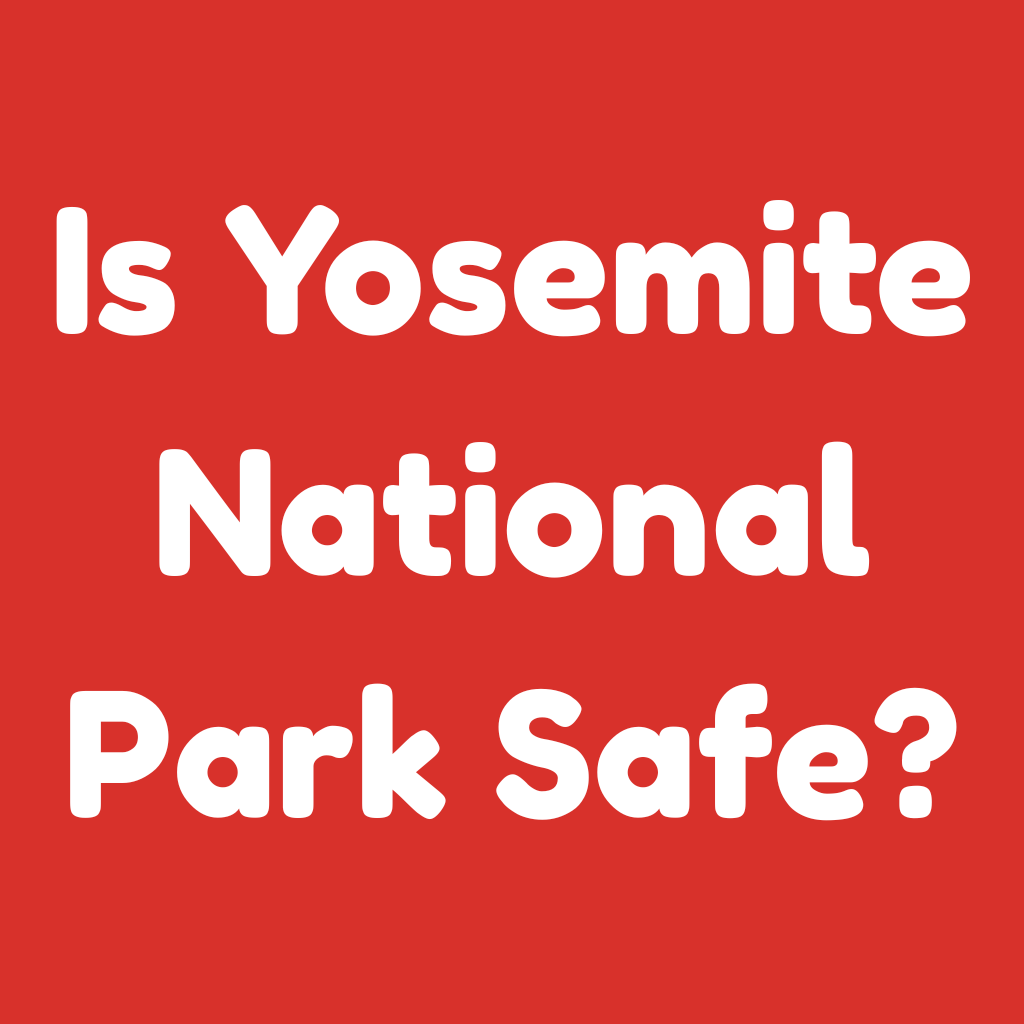Is Yosemite National Park Safe?
Yosemite National Park, one of the most iconic destinations in the United States, attracts millions of visitors every year.
The stunning granite cliffs, towering waterfalls, and diverse wildlife make it a must-visit spot for nature lovers, hikers, and adventurers.
However, like any natural wonder, Yosemite comes with its risks, which begs the question: Is Yosemite National Park safe?
If you’re planning a trip to Yosemite, you might be wondering what dangers to watch out for and how to stay safe while exploring this breathtaking park.
In this guide, we’ll dive deep into all the safety considerations you need to know, from wildlife encounters to natural hazards, and offer practical tips to ensure your visit goes smoothly.
So, whether you’re a seasoned hiker or a first-time visitor, keep reading to find out everything you need to know.
Wildlife Safety: Knowing How to Coexist with Yosemite’s Creatures
Yosemite National Park is home to a wide range of wildlife, from black bears to mule deer, and even elusive bobcats. While these animals are an integral part of the park’s ecosystem, they can also pose risks to visitors if they are not respected.
The Black Bear Dilemma
Black bears are the most famous (and feared) wildlife species in Yosemite. They are often seen foraging for food near campsites, picnic areas, and along the trails.
While they are generally not aggressive, they are opportunistic feeders and will try to steal food from visitors.
Safety Tips:
- Never feed the bears: This is one of the most important rules. Feeding bears can make them aggressive, and it’s illegal.
- Store food properly: Use bear-proof food lockers or hang your food at least 10 feet off the ground and 4 feet away from trees.
- Stay calm if you encounter a bear: Avoid sudden movements and slowly back away. Don’t run, as this could provoke a chase.
Other Wildlife Considerations
Besides bears, Yosemite is home to other potentially dangerous animals, such as mountain lions, rattlesnakes, and coyotes. While attacks are rare, knowing how to avoid an encounter is important.
Safety Tips:
- Mountain Lions: Stay in groups, avoid hiking at dawn or dusk (when mountain lions are most active), and keep children close.
- Rattlesnakes: Stick to marked trails and avoid stepping over rocks or logs. If you hear a rattlesnake’s rattle, back off slowly.
- Coyotes: Keep your distance and do not feed them, as this can lead to aggressive behavior.
Table: Wildlife Safety Tips
| Animal | Risk Factors | Safety Tips |
| Black Bears | Can be attracted to food, may act aggressively | Store food in lockers, don’t feed them |
| Mountain Lions | Predatory, stealthy creatures | Stay in groups, hike during daylight |
| Rattlesnakes | Venomous bites if threatened | Stay on trails, don’t disturb rocks |
| Coyotes | Can become aggressive if fed | Keep your distance, don’t feed them |
Weather Hazards: How to Prepare for Yosemite’s Changing Climate
Yosemite’s weather can be unpredictable, and the changing conditions can pose a risk to your safety. Temperatures can fluctuate drastically, and sudden storms can appear, especially in the higher elevations.
Winter Weather Risks
If you’re visiting Yosemite in the winter, snow and icy conditions can create slippery trails and make driving dangerous. Winter storms are common, and heavy snowfall can close certain areas of the park.
Safety Tips:
- Check weather forecasts before heading to Yosemite, especially if you plan on hiking or driving in the mountains.
- Pack warm clothing and prepare for possible snow or ice, even in the spring or fall.
Summer Heat
Summer in Yosemite can be sweltering, with temperatures in the valley soaring over 90°F. Dehydration and heat exhaustion are real concerns during hot weather.
Safety Tips:
- Stay hydrated by drinking plenty of water, especially if you’re hiking or exploring.
- Wear sunscreen and protective clothing to avoid sunburn.
Storms and Flash Floods
Sudden thunderstorms, especially in the late afternoon, are common in Yosemite, particularly during the summer months. These storms can lead to flash floods, especially in low-lying areas near rivers.
Safety Tips:
- Be aware of storm warnings and know where to find shelter.
- Avoid hiking in low areas during or after heavy rain to reduce the risk of flash floods.
Hiking Safety: Tips for Exploring Yosemite’s Trails
Yosemite’s trails range from easy walks to challenging backcountry hikes, and while many trails are well-maintained, they can still present hazards. Staying safe on the trails requires preparation and awareness.
Proper Gear and Preparation
Before heading out on a hike, make sure you have the right gear. Wearing appropriate footwear, packing extra food and water, and having a map or GPS are essential.
Safety Tips:
- Wear proper footwear: Make sure your shoes are sturdy and provide good traction, especially if you’re tackling steep or rocky trails.
- Bring a trail map or use a GPS to ensure you don’t get lost.
- Carry extra water and snacks, as some trails can be longer than you expect, and dehydration can occur quickly in hot weather.
Stay on Marked Trails
Yosemite has over 750 miles of trails, many of which pass through rugged terrain. While it may be tempting to venture off-trail, it’s important to stay on designated paths to avoid getting lost or injured.
Safety Tips:
- Follow trail signs and markers to stay on the path.
- Tell someone your itinerary before you go, especially if you plan on hiking alone.
Driving and Traffic Tips: Navigating Yosemite Safely
While hiking and wildlife are the primary concerns for many visitors, driving in Yosemite also requires attention to safety. The park is vast, and driving conditions can vary depending on the season.
Winter Driving Conditions
If you’re visiting Yosemite during the winter, snow and ice can make roads treacherous. Tire chains may be required in certain areas, and road closures are common.
Safety Tips:
- Check road conditions before driving into the park, especially in winter.
- Carry tire chains and know how to use them if you’re visiting during the snowy season.
Summer Traffic
Yosemite is one of the most popular national parks in the U.S., so during peak summer months, traffic can be overwhelming. Finding parking at popular sites like Glacier Point or Yosemite Valley can be a challenge.
Safety Tips:
- Arrive early to secure parking at busy spots.
- Use public transportation or park-and-ride services if available.
Common Mistakes to Avoid: Stay Safe and Make the Most of Your Trip
While planning your trip to Yosemite, it’s important to avoid some common mistakes that could put your safety at risk. Here are a few to watch out for:
Underestimating the Terrain
Yosemite’s trails and wilderness areas can be tough, even for experienced hikers. Make sure to evaluate your abilities before attempting difficult hikes.
Mistake to Avoid: Trying to hike a strenuous trail without proper preparation or fitness.
Not Carrying Enough Water
Yosemite’s dry climate can quickly dehydrate you, especially on longer hikes or during hot weather. Always carry enough water.
Mistake to Avoid: Not bringing enough water or relying on streams or lakes as your only water source.
Conclusion: Your Yosemite Adventure Awaits
Yosemite National Park is an incredible place to explore, but it’s important to be aware of the potential risks that come with such a stunning and rugged landscape.
By understanding the wildlife, weather, hiking, and driving conditions, you can ensure that your trip is not only memorable but also safe.
Key Takeaways:
- Respect wildlife and never feed bears or other animals.
- Be prepared for changing weather conditions, especially in the winter and summer.
- Always stay on marked trails and carry the right gear.
- Avoid common mistakes like underestimating the terrain or not staying hydrated.
Are you ready to explore Yosemite safely? Remember to pack smart, stay alert, and enjoy all the park has to offer!
Have you visited Yosemite before? What safety tips do you recommend? Share your thoughts in the comments below! And don’t forget to share this article with your friends who are planning their own Yosemite adventure.
FAQs About Yosemite Safety
1. Is Yosemite safe for children?
Yes, but you should always supervise your children closely, especially near cliffs, waterfalls, and wildlife. Choose family-friendly trails and make sure to bring plenty of snacks and water.
2. Can I hike alone in Yosemite?
It’s generally safe to hike alone in Yosemite, but it’s always best to let someone know your plans. Stick to popular, well-marked trails, and carry a map or GPS.
3. What should I do if I encounter a bear in Yosemite?
Stay calm, avoid eye contact, and slowly back away. Do not run, as this could trigger a chase. Make yourself appear larger by standing tall and making noise.







